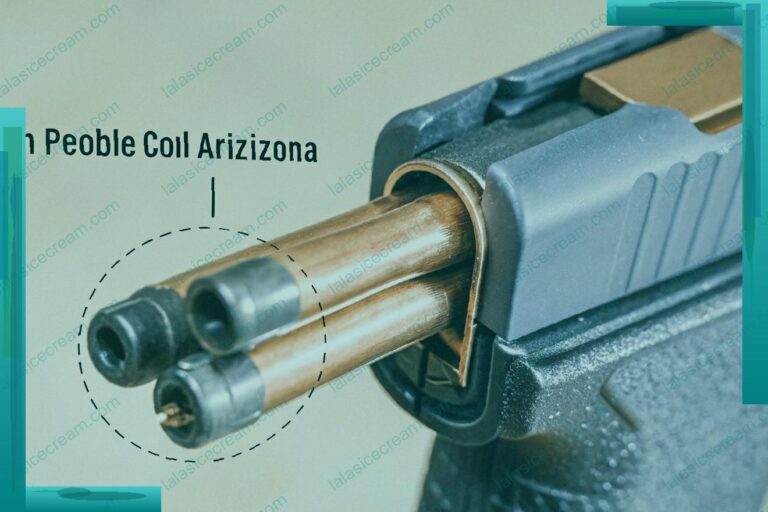Table of Contents
- Understanding Local Ordinances on Concealed Stun Gun Possession
- Key Legal Requirements for Carrying Concealed Stun Guns in Public
- How to Navigate Permit Systems and Registration Processes Effectively
- Best Practices for Compliance and Staying Updated with Regulatory Changes
- In Conclusion
Understanding Local Ordinances on Concealed Stun Gun Possession
Local governments often establish specific regulations governing the possession and carrying of concealed stun guns, reflecting community safety priorities and legal standards. These laws can vary widely, not only in terms of who is eligible to carry but also in restrictions related to where and how these devices may be carried. For example, some municipalities require permits or licenses, while others prohibit concealed stun guns outright in sensitive areas such as schools, government buildings, and public transportation hubs. Understanding these distinctions is essential for anyone looking to legally carry a stun gun as a method of self-defense.
Common regulatory elements in local ordinances include:
- Age restrictions: Minimum age requirements to legally carry a concealed stun gun.
- Permit requirements: Whether a formal application and background check are needed.
- Restricted zones: Specific locations where carrying stun guns is prohibited.
- Storage and transportation rules: How stun guns must be stored or transported to avoid legal issues.
By staying informed about these legal nuances, individuals can ensure they remain compliant with the law, avoid fines or confiscation, and responsibly exercise their rights to personal protection within their community.
Key Legal Requirements for Carrying Concealed Stun Guns in Public
Understanding the legal framework surrounding concealed stun guns is crucial for responsible ownership. Many jurisdictions impose strict age restrictions, typically requiring individuals to be at least 18 or 21 years old to carry a concealed stun gun. Additionally, permits or licenses may be mandatory, with applicants often required to undergo background checks to ensure they have no criminal record or history of violence. It’s equally important to recognize zones where carrying stun guns is prohibited, such as government buildings, schools, and places of worship, which are commonly designated as no-carry areas.
Compliance also extends to how and where the stun gun is carried. Laws often specify that stun guns must remain concealed and easily accessible, but they prohibit their use for any unlawful purpose. Some local regulations require users to carry stun guns in original packaging or with safety locks engaged when in public. To stay compliant, owners should familiarize themselves with local ordinances, which might include:
- Mandatory registration or declaration of the stun gun with local law enforcement.
- Restrictions on battery size and electrical output to meet safety standards.
- Prohibitions against carrying stun guns on public transportation or during certain events.
How to Navigate Permit Systems and Registration Processes Effectively
Understanding the intricacies of permit systems starts with thorough research on local and state regulations. Since concealed stun guns fall under specific legal frameworks, identifying the appropriate authority-whether it’s a city clerk’s office, police department, or a state licensing bureau-is crucial. Often, official websites provide step-by-step guides and downloadable forms that clarify application requirements. To simplify the process, keeping a checklist of necessary documents, such as proof of residency, background checks, and any relevant prior permits, can streamline your registration experience.
Once equipped with the correct paperwork, applicants should pay close attention to submission deadlines and potential fees to avoid processing delays. Many jurisdictions now offer online application portals, enhancing convenience and real-time status tracking. Remember to retain copies of all submitted materials and confirmations. Additionally, staying informed about renewal timelines and possible changes in regulations ensures sustained compliance without surprises. Incorporate these practices for a smooth and legally sound registration journey when acquiring concealment permits for stun guns.
- Research local legal requirements carefully
- Gather all mandated documents before applying
- Utilize official online portals if available
- Keep detailed records of submissions and approvals
Best Practices for Compliance and Staying Updated with Regulatory Changes
To effectively navigate the evolving landscape of stun gun regulations, local governments and individuals must adopt a proactive approach. Establishing a regular review schedule for legal updates ensures that all parties remain aligned with current laws. Subscribe to reputable legal bulletins, join relevant government forums, and leverage notifications from regulatory bodies. This ongoing vigilance minimizes the risk of accidental non-compliance and fosters an informed community that respects both public safety and personal rights.
Key practices to maintain compliance include:
- Participate in community workshops: Many municipalities offer training sessions that clarify local and state regulations related to concealed stun guns.
- Engage legal counsel: Consulting with attorneys experienced in weapons law can provide critical insights and help interpret nuanced legal language.
- Utilize official government resources: Regularly check municipal websites for ordinance updates and executive orders.
- Document compliance efforts: Keeping records of training, licenses, and communications demonstrates good faith adherence during audits or inspections.
In Conclusion
In conclusion, understanding how local governments regulate concealed stun guns is essential for responsible ownership and compliance with the law. These regulations often vary widely-from permitting requirements to restrictions on carrying and use-reflecting communities’ efforts to balance personal safety with public security. Staying informed about your local ordinances, seeking proper permits when necessary, and following legal guidelines not only helps you protect yourself but also ensures you do so within the bounds of the law. As legislation continues to evolve, keeping an eye on updates will remain crucial for anyone considering concealed stun guns as a means of self-defense. By approaching this topic with both awareness and respect for regulations, individuals can navigate the complexities confidently and legally.Check Our Other Blogs
- StunGun – Your Trusted Source for Stun Guns, Laws, and Self-Defense Tips
- PepperSprayLaws – Your Trusted Resource for Pepper Spray Information
- StunGunLaws – Your Trusted Guide to Stun Gun Legality and Safety





